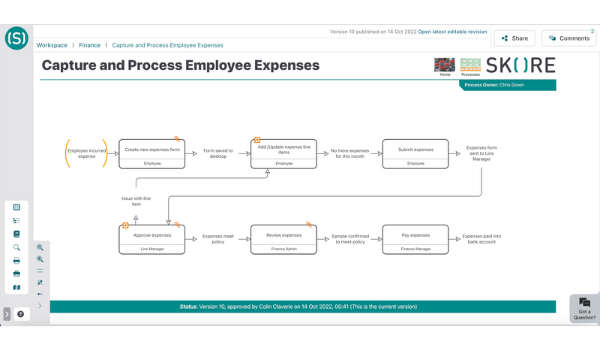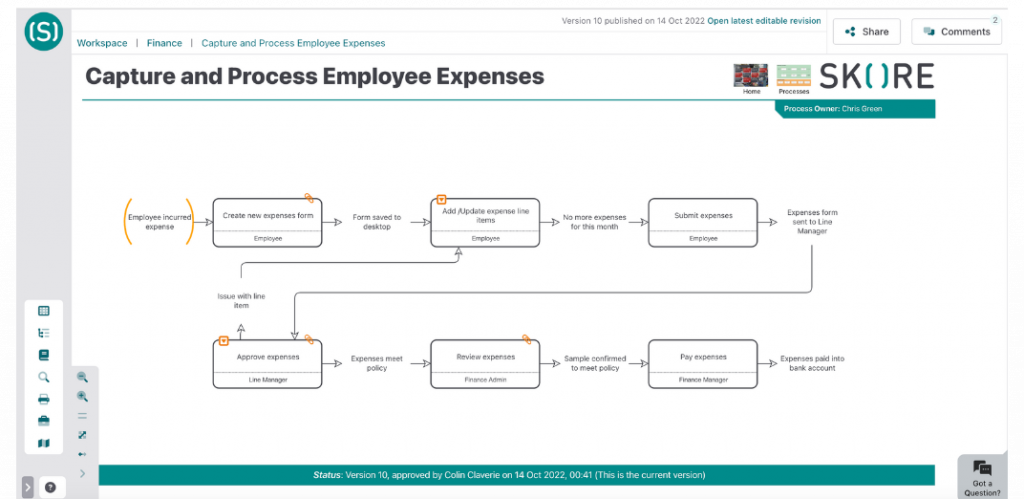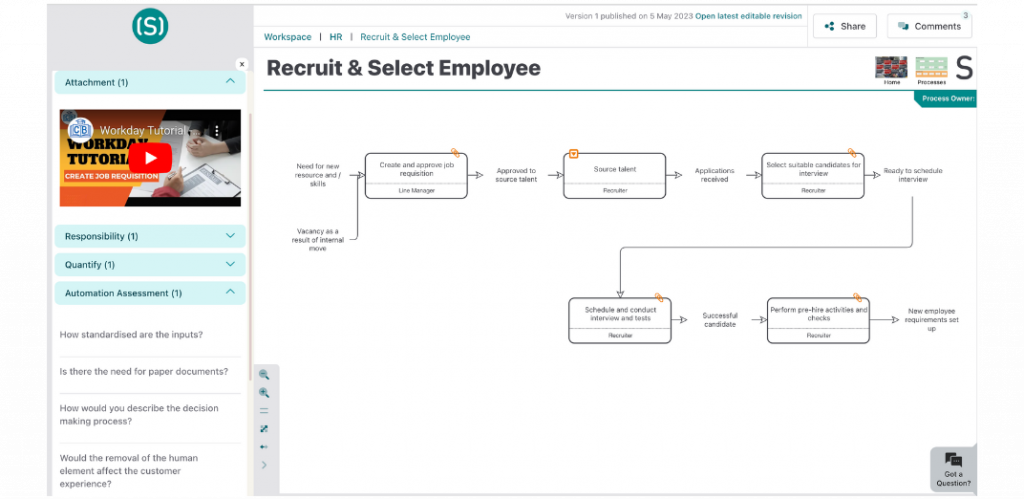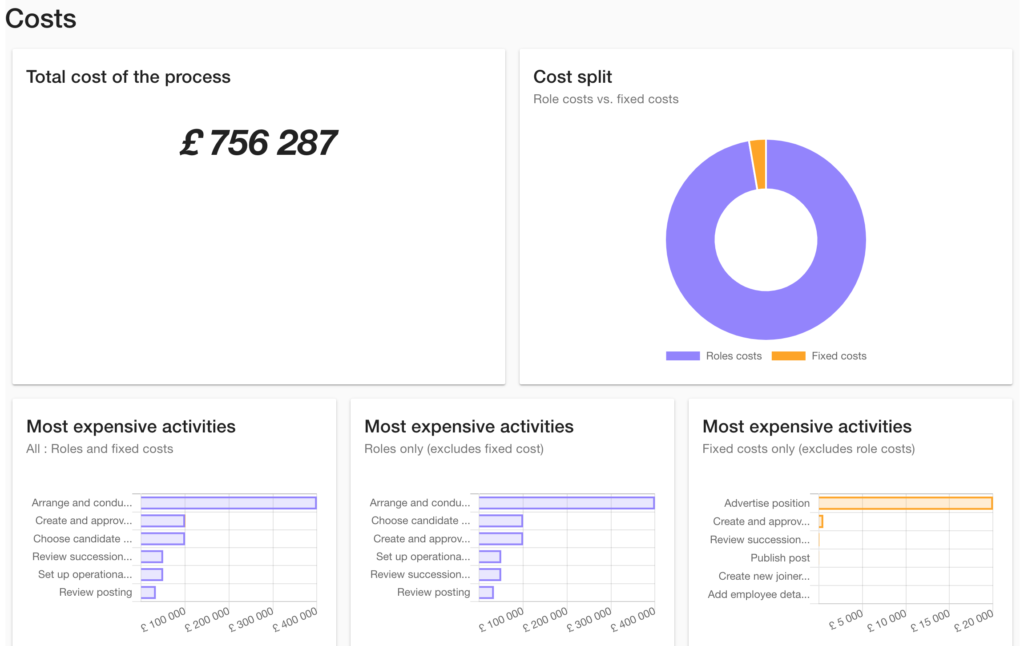Why Updating Business Processes Should Be a Priority
In today’s fast-paced and ever-evolving business landscape, the importance of efficient and updated business processes cannot be overstated.
These processes are the backbone of your organisation, guiding daily operations and shaping the customer experience. Yet, many companies fail to prioritise the regular review and update of their processes, leading to a myriad of issues.
In this article, we’ll delve into why updating business processes should be a top priority for your organisation.
No Control
When you lack control over your business processes, they are outdated or incorrect. This means you run the risk of doing things wrong, affecting the quality of your products or services, and also introducing inefficiencies that can be costly in the long run:
- Increased Error Rates: Outdated processes are often misaligned with current best practices and industry standards. This misalignment opens the door to higher error rates, as employees unknowingly follow processes that are no longer optimal or accurate. These errors can manifest in various ways, from manufacturing defects in products to service quality issues in client interactions. The consequences can be significant, leading to customer dissatisfaction, rework, and, in severe cases, costly product recalls or service disputes. These errors not only undermine your reputation but also place additional burdens on your workforce to rectify mistakes.
- Reactive Problem-Solving: When employees lack accurate and updated processes, they are forced to resort to improvisation and ad-hoc problem-solving. This reactive approach can introduce inconsistencies in how issues are addressed. Without clear guidelines to follow, employees may take different paths to resolve similar problems, making it challenging to identify and address the root causes of issues. This can result in a patchwork of temporary fixes that fail to address underlying systemic problems. It’s like putting a band-aid on a wound without treating the infection beneath, leading to recurring issues and prolonged inefficiencies.
- Lost Efficiency: Outdated processes often include redundant steps or unnecessary tasks. These redundancies not only waste time and resources but also erode the overall efficiency of your operations. Employees may find themselves bogged down in tasks that no longer contribute to the end goal, causing frustration and inefficiency. This inefficiency can have a cumulative impact, as multiple employees may be navigating a labyrinth of outdated processes, further slowing down operations and diminishing productivity.
- Overdependence on Colleagues: In the absence of clear and updated processes, employees may overcompensate by relying heavily on their colleagues for guidance. While collaboration is valuable, excessive dependence on colleagues can strain the productivity of your team. It can lead to delays as employees wait for guidance or clarifications, creating bottlenecks in the workflow. Additionally, the inconsistency introduced by employees seeking different colleagues’ advice can lead to varied approaches, further undermining the uniformity and quality of work.
- Repetitive Mistakes: When employees lack clarity on how tasks should be done due to outdated processes, they are more likely to make the same mistakes repeatedly. This pattern of repeated errors can have a detrimental impact on your product or service quality, causing dissatisfaction among customers. Furthermore, the failure to address the root causes of these mistakes perpetuates a cycle of inefficiency, resulting in persistent quality issues and customer complaints.
- Frustration and Burnout: The constant struggle to figure out the right way to do things can lead to frustration and burnout among your employees. Poor process management not only affects morale but can also result in higher turnover rates.
Get Free Resources to Help Process Improvement Initiatives
Duplicated Efforts
Failing to update your business processes consistently can lead to a frustrating cycle of duplication and inefficiency within your organisation. This cycle often stems from a lack of clarity and direction in your workflows, which can have far-reaching consequences for your efficiency and productivity.
Employees may begin duplicating efforts and wasting precious time to understand the process they’re assigned to, as they’re following outdated practices and unclear guidelines. It becomes challenging for your team to understand their goals, and this will begin to affect their motivation and confidence.
As such, in organisations where business processes are not regularly reviewed and updated, employees may be uncertain about the correctness of the processes they’re following. This uncertainty can result in various consequences:
- Time-Consuming Questions: Employees spend time asking colleagues or supervisors what the correct process is. These inquiries can be disruptive and lead to delays in task completion.
- Lack of Confidence in Documents: When employees are unsure about the accuracy of process documentation, they may not bother looking for documents. This lack of confidence in your documentation renders it ineffective and underutilised.
- Constantly Updating Documents: In the absence of clearly defined and up-to-date processes, employees may attempt to update documents themselves. This can lead to inconsistency and version control issues, as different individuals make changes without proper oversight.
- The Cost of Uncertainty: The time and effort spent on clarifications, searching for documents, and updating processes can add up to substantial costs in terms of lost productivity and resources – between 20 to 30% in fact.
Employees who feel caught in this cycle of duplication and confusion are less likely to bring their full creative potential to their roles. The lack of clarity can stifle innovation, as employees may perceive the organisation as resistant to change or unwilling to invest in optimizing operations. This not only hampers your organisation’s ability to adapt to market shifts but can also deter talent retention and recruitment, as potential employees are drawn to organisations with streamlined, well-maintained processes and a culture of innovation.
No Accountability
When your business processes fall into disrepair due to a lack of regular reviews and clear ownership, a sense of ambiguity can pervade your organisation. Employees may find themselves uncertain about who is responsible for specific tasks or the entire process, and this uncertainty can lead to a host of problems.
First and foremost, the lack of clear ownership can result in a culture of blame-shifting. When things go awry or mistakes occur, employees may point fingers at one another or simply disown the problem altogether. This reluctance to take responsibility not only hinders problem-solving but can also foster a toxic working environment, where finger-pointing and a lack of accountability are the norm.
Furthermore, ambiguity around process ownership can lead to inefficiencies and bottlenecks. With no one to oversee or maintain the process, it may remain unchanged and unimproved over time. This stagnation can result in operational inefficiencies that slow down your organisation’s productivity. Additionally, when no one takes the initiative to optimize or update processes, you miss out on opportunities for improvement and adaptation to changing market conditions. The lack of ownership can stifle innovation and hinder your organisation’s ability to remain competitive in dynamic business environments.
Get Free Resources to Help Process Improvement Initiatives
Low Confidence
When business processes are outdated or unclear, it can erode employee confidence in their own abilities and in the organisation as a whole:
- Insecurity: Unclear or outdated processes create an environment where employees often find themselves second-guessing their every move. The lack of clarity regarding the correct way to perform tasks can breed insecurity, as employees wonder whether they are doing things right. This insecurity can undermine their confidence in their own abilities and competence in their roles. As a result, job satisfaction can plummet, and motivation wanes as employees grapple with self-doubt and anxiety about their performance.
- Disengagement: The persistent uncertainty and low confidence stemming from unclear processes can lead to disengagement among employees. When individuals don’t have faith in their ability to perform their tasks effectively, they become disheartened and disinterested in their work. This disengagement has cascading effects, ultimately reducing their productivity and innovation. Disengaged employees are less likely to contribute their best ideas or efforts, leading to missed opportunities for growth and improvement within the organisation.
- Hesitancy to Innovate: In an environment where processes are perceived as uncertain or untrustworthy, employees may hesitate to suggest or implement changes and improvements. This hesitancy stifles innovation and adaptability within the organisation. When employees feel that their recommendations or innovations will not be taken seriously or that their efforts will be in vain due to unclear processes, they are less likely to propose new ideas or methods. This can be detrimental in a rapidly evolving business landscape where innovation is often the key to remaining competitive and agile.
Updating Business Processes is Vital to a Healthy Business
The regular review and update of business processes are essential to maintain efficiency, quality, and employee confidence. Failing to prioritise this critical task can lead to incorrect processes, duplicated efforts, a lack of accountability, and low employee confidence. These issues can hinder your organisation’s growth and competitiveness in the market.
To address these challenges, businesses must establish a culture of continuous improvement, invest in robust process management and documentation tools such as Skore, and encourage employee involvement in the process review and update efforts. By doing so, organisations can ensure that their business processes remain up-to-date, effective, and supportive of their overall goals and success.
If you’d like to learn more about business process improvement or management – join our community for updates and resources to guide you.






